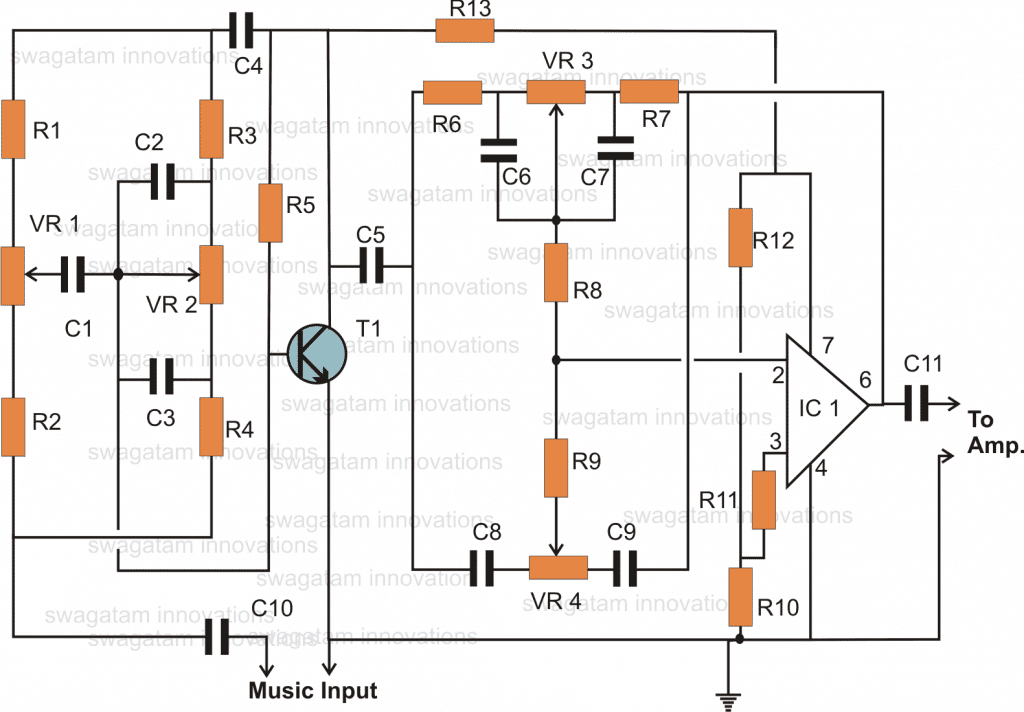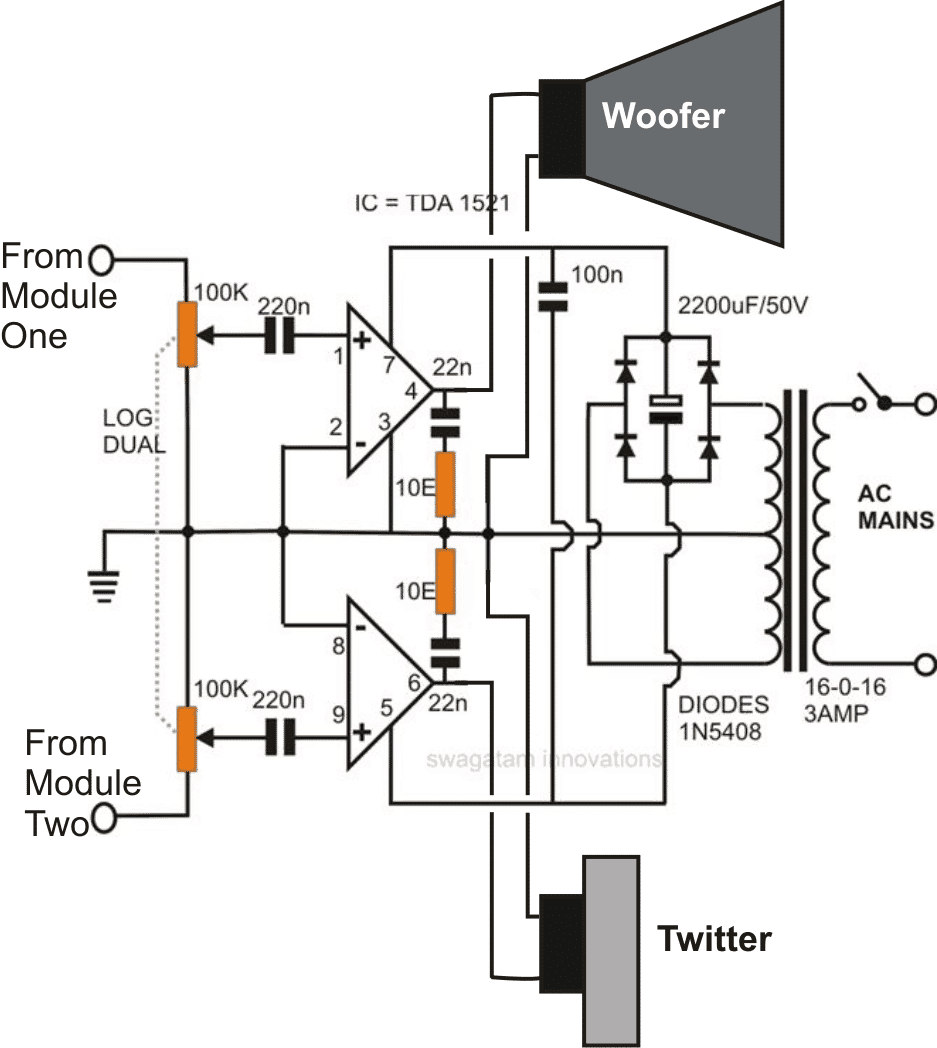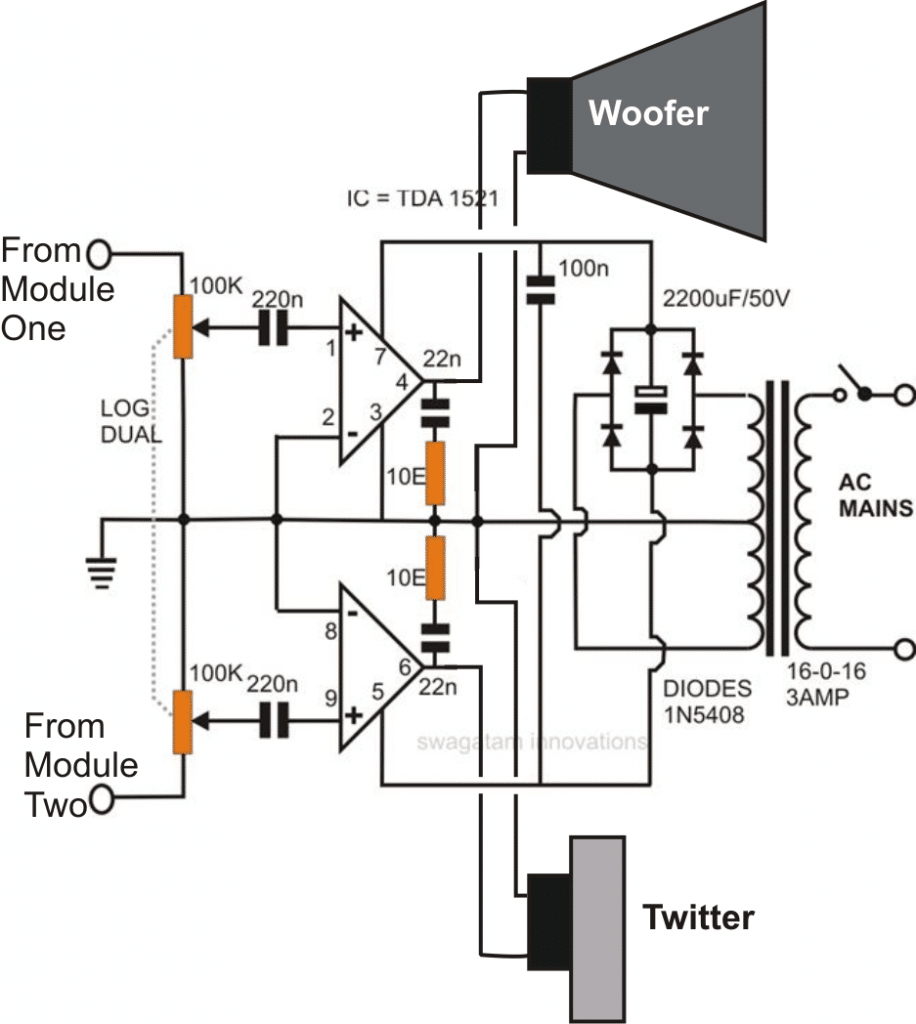The article discussed here provides a simple, cheap home theater system circuit that may be built at home and used for the desired purpose.
Introduction
The results from this circuit design are outstandingly rich and have the capabilities comparable with the costly hi-end types available in the market.
Home theater systems are quite common nowadays and probably every one of us has one in their homes.
However most of you might be quite unsatisfied by the results of these commercial brands and makes, or probably many of you are completely unaware of what a truly efficient home theater system really sounds like.
Let’s study the design elaborately with the following points:
Basically the circuits discussed are all active tone controller configurations designed for controlling different frequency bandwidth discretely and reproduce the outputs at the respective speakers.
The speakers are also specifically chosen and integrated with the relevant stages for acquiring the most optimized results.

Looking the shown circuit above, the design is a typical tone controller circuit, having discrete bass and treble controls.
The first section incorporates a transistor which solely becomes responsible for the required frequency dimensioning functions. The relevant pots are used for getting the desired bass and treble enhancement effects from the circuit.
How the Circuit Functions
The CIRCUIT DIAGRAM is pretty simple and yet provides very cut and boost with the relevant bandwidths. The second stage which utilizes the IC 741 is also a bass, treble control circuit, however since an IC is used the effects become much enhanced than the previous stage and again the results can be discretely monitored and implemented using the relevant pots associated with the circuit.
It can be clearly seen that the above discussed two stage are connected in series. It means the obtained music and speech enhancing features from the individual units now become intensified to much sharper and magnified extents, but the results still are quite controllable to the desired any desired limits using the four pots associated with the individual stages.
The above units may be optimized to receive audio outputs having intense and heavy bass effects or the results may be trimmed to highlight extreme “chilling” treble effects from the outputs.
Two of the above circuit assemblies may be built separately for making the ultimate home theater system circuit, meaning you will finally have eigt pots to control for achieving any desired levels of optimized sound levels. The above units need to be amplified though, before the effects can be truly enjoyed through the relevant woofers and tweeter units.
If you already own or intend to procure a ready made amplifier, then the above units can be simply introduced in between the audio source and the amplifier input, or if you are a complete electronic freak, you may want to make the amplified section also all by you.
A stereo amplifier circuit design is shown below, one of the channels is used for driving the woofers and the other one is used for activating the tweeters.

A couple of modules discussed in the above section will need to built and connected to the shown stereo amplifier circuit for completing the proposed home theater circuit design.
Parts List
R1, R2, R3, R4, R5, R9 = 2K2,
R6, R7, R8 R10, R11, R12, R13 = 10K,
VR1, VR2, VR3, VR4 = 100K, LINEAR POTS,
C1 = 0.1uF,
C2, C3 = 0.022uF,
C4, C10, C5, C11 = 1uF, non polar,
C6, C7 = 0.033uF,
C8, C9 = 0.0033uF,
T1 = BC547B,
IC1 = 741
